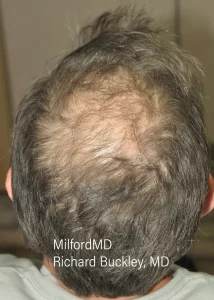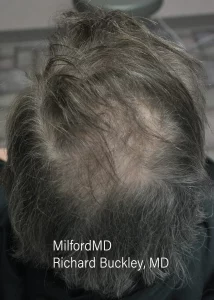FAQ's
Follicular unit transplantation is the process of transplanting natural groupings of one to four hairs, ensuring minimal non-hair bearing skin is transplanted. This meticulous technique yields smaller recipient wounds, facilitating healing and delivering a more natural cosmetic result.
Yes, the evolution of microscopic dissection and follicular unit transplantation has expanded its practicality to areas like eyebrows and eyelashes, making it versatile for various hair restoration needs.
Yes, follicular unit transplantation has proven to be a viable alternative for female pattern hair loss, which is typically more diffuse in nature. It delivers a natural and effective solution for women seeking hair restoration.
If surgical or medical interventions are not suitable, options such as temporary total hair replacement (wigs) or hair additions may be considered. This is particularly relevant for individuals with temporary total hair loss due to factors like radiation or chemotherapy.


